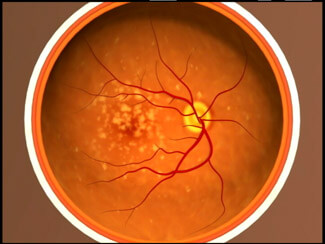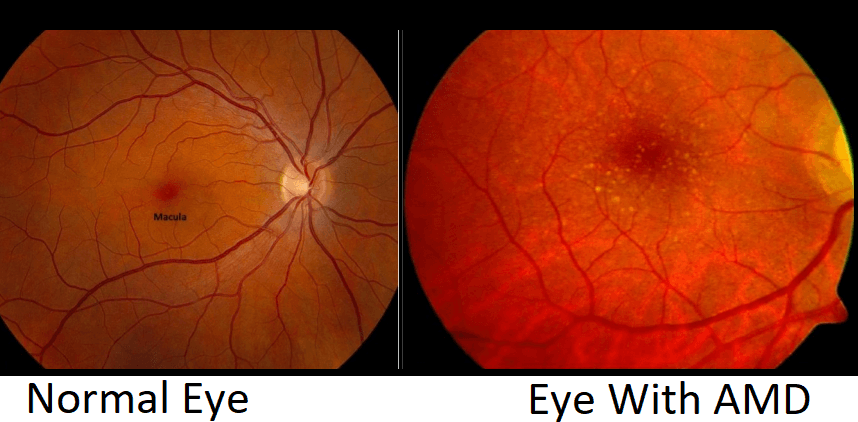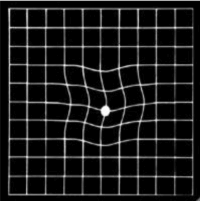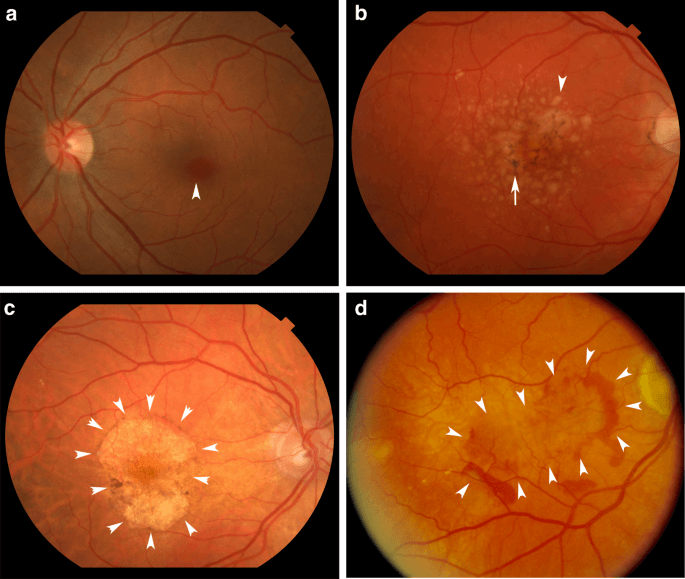
AMD is one of the leading causes of vision loss in the elderly. The macula is a part of the retina in the back of the eye that ensures that our central vision is clear and sharp.
The eye is like a camera (see diagram). The cornea and the lens focus light onto the retina, which lines the back of the eye and acts like the photographic film in a camera. The macula is the central part of the retina and is responsible for our ability to see fine detail, for reading, driving and recognizing faces. The Macula is also responsible for colour vision.
Age-related macular degeneration (AMD) occurs when the retina undergoes degenerative changes due to age. The retinal tissues begin to weaken and the photo receptors cells start under functioning or they die, causing vision loss. Patients may experience anything from a blurry, grey or distorted area to a blind spot in the centre of vision. . Although AMD causes blurring of the central vision and thus impairs reading especially, it does not affect side vision so it does not result in total blindness. People with this complaint usually retain reasonable getting-about vision.
Initially the changes are mild which can progress over a period of time. This is called a “Dry” Age Related Macular Degeneration.
Sometimes the changes become pathological and new abnormal blood vessels can develop into the retina. These blood vessels can leak fluid or bleed causing significant and rapid damage to the retina (macula). This type is called the “Wet” Age related macular degeneration.

Recent developments include genetic testing to determine your risk of developing severe AMD.
There is no treatment for Dry ARMD, although high dose multivitamin combination has been shown to decrease the risk of visual loss from ARMD over 5 years in high-risk patients
“Wet” AMD can be treated with medications called Anti VEGF injected into the eye. These injections need to be given at frequent intervals to check the disease from progressing and to aid in visual recovery. A meticulous monitoring of this condition is of utmost importance.
Early reporting of new distortion or blurriness should be reported and referred to an ophthalmologist. The earlier the disease is detected, the more likely it will be amenable to treatment, and the loss of vision will be lessened. The earliest inkling is distortion of straight lines, making a grid pattern appear like this :

Avastin: Avastin is an antibody to vascular endothelial growth factor (VEGF), a protein responsible for angiogenesis (new blood vessel growth). Because of Avastin's ability to bind to VEGF, the VEGF molecule is then unable to bind to its receptor and hence angiogenesis does not occur. Avastin is approved as an anti-tumor medication for use in specific cancer types. Although Avastin is not approved by the FDA for ocular use, it has proved to be highly efficacious for use in cases of retinal or choroidal neovascularization and macular edema. It has been in routine use for eye disease "off label" since 2005.
Lucentis: Lucentis is a modified version of Avastin. Like Avastin, Lucentis binds VEGF which stops VEGF from binding to its receptor and promoting angiogenesis. Lucentis is a smaller and may better penetrate into the retina. Lucentis has specifically been designed for use in the eye to treat neovascular (wet) macular degeneration, among other retinal disease, and is approved for this use by the FDA. The CATT trial has shown that Lucentis and Avastin work to about the same degree for patients with wet macular degeneration.

Visudyne was the first drug therapy approved for treatment of the wet form of macular degeneration. It is only for those patients who have new blood vessel growth (neovascularization) under the retina in a well defined, distinctive pattern known as "predominantly classic." About 40 to 60 percent of new wet AMD patients have this form of the disease, according to Novartis, the company that markets Visudyne.
In this treatment procedure, the doctor injects Visudyne into your arm, then activates the drug as it passes through the retinal blood vessels by shining a low-energy laser beam into your eye. Visudyne is activated by the laser light, which produces a chemical reaction that destroys abnormal blood vessels. The procedure is virtually painless, according to Novartis.
One in six Visudyne patients shows improved vision, or about twice as many patients as those who do not undergo Visudyne therapy. Recent studies also indicate significant slowing of AMD progression in many patients receiving Visudyne drug treatment.
In one study, 225 eyes with wet AMD were treated with Visudyne, and 114 comparable eyes were not. After 24 months, legal blindness occurred in 28 percent of the Visudyne group and in 45 percent of the non-treated group.
Visudyne sometimes is used in addition to Lucentis or Avastin as a treatment for wet macular degeneration. Other light-activated drugs designed to perform in ways similar to Visudyne are currently in development.
Visit us at Insight Eye Clinic and experience unrivalled professional service from the moment you step in. We offer the best macular degeneration management in Mumbai and assure our clients the highest quality eye care.
